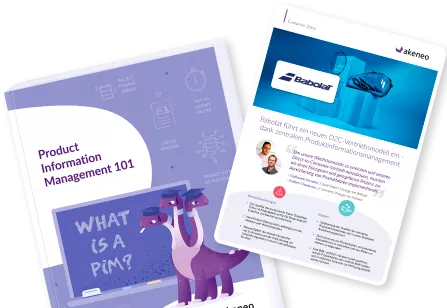The title of this article is not a misprint, nor is it hyperbole or exaggeration. We all know we live in a different world than we did just 18 months ago. The Covid-19 pandemic has upended many previous trends and predictions for the modern-day world of both B2C and B2B eCommerce. The demise of print and other offline touchpoints has been greatly exaggerated. One of the definitive effects of Covid was that retail traffic obviously plummeted while e-commerce dramatically increased- forcing companies to re-evaluate their marketing strategies in the wake of this traffic shift.
In today’s world, the definition of “print” has expanded well beyond the traditional paper catalog or product brochure – though those publications remain more important and relevant than many folks give them credit for. These types of publications remain an ideal platform for new product discovery and introduction. However, in most instances, the processes used to create these are archaic at best. We are constantly amazed by some of the things we hear from organizations across the spectrum regardless of industry or company size. Unbelievably, there are even some companies that spend 12-18 months working on a single publication. Most of the layouts we see today are done manually with copy/paste techniques and excel exports. By the time a publication is ready to go to print, much of the information is already out-of-date, further lengthening the publication process as more revisions are made. Even purely “digital” publications often follow these patterns. For instance, the prototypical PDF datasheets that are downloadable from many websites and webshops often follow a similar process. Whenever a new product is released or updates are made, someone has to get a data export from IT, manually open up Adobe InDesign, make the change, send for proofreading and approval, generate the PDF, and finally publish it to the website. These are just a few of the scenarios that we encounter frequently. Outdated processes such as this just exacerbate the stereotype of print’s important role in the omnichannel experience.
Print and other offline touchpoints have been largely ignored thus far in the digital transformation of most marketing departments. A primary reason for this is that the types of capabilities that are taken for granted in the digital world have simply not yet been made accessible to the creative publisher. The ideas of segmentation, personalization, A/B testing, AI, etc., have remained out of the reach for much of the publishing world up to this point. However, a new generation of tools offering layout automation, headless publishing, personalization, and more is now readily available. Rather than furthering the false narrative that offline is dead or dying, these tools enable the marketer to deliver a true omnichannel experience. Additionally, they have the ability to produce very robust ROI from investments in systems like a PIM. Imagine producing a catalog up to 80% more efficiently in terms of time and cost. For example: What if you were able to produce ten 200-page variations of a catalog for various segments versus one 1,000-page monolithic catalog for all? In this case, the substantial increase in ROI comes from both a better-targeted publication and also having saved 800 pages in printing costs. As an added benefit, the creative production time gap between online and offline narrows significantly. Suddenly these publications go from being a legacy necessity to a strategic capability. Creative marketers and agency partners transition from being copy and paste editors to true strategic marketers. Marketing automation platforms are now able to easily incorporate these capabilities into your organization’s campaign planning. The foundation for all the automation and capability is your corporate data that is often contained in a PIM system. Simply put, clean and consistent data is essential for this level of automation.
There are several areas where these new capabilities can be employed to directly improve your e-commerce performance. It’s now possible to instantly generate accurate and up-to-date downloadable datasheets simply by making a change to the product data in the PIM without the creative team having to lift a finger. Organizations can enable users to create their own on-demand personalized catalogs, brochures, and more. To cite a particularly innovative use case, a large electronics retailer is now using cart abandonment data to generate personalized postcard offers instead of a standard follow-up email approach. The difference in open rates is staggering. Depending on your source, the email open rate averages around 18-20% and that number is not climbing. Again, depending on your source, the “open” rate on these kinds of offline mailer offers tends to average around 75-80%. Anecdotally, our customer says they have seen a significant increase in conversion and that, additionally, this automated process has not added any burden to their company’s creative marketing resources.
Taking advantage of the well-managed data that exists in the PIM, closing the creative production time gap and enabling the flexibility to produce the same quality of segmentation and personalization offered by offline channels is the key to delivering the complete customer experience management and optimizing the effectiveness of your company’s e-commerce channel. Organizations that capitalize on true omnichannel experiences are the ones that will ultimately succeed in differentiating themselves from their competitors.





